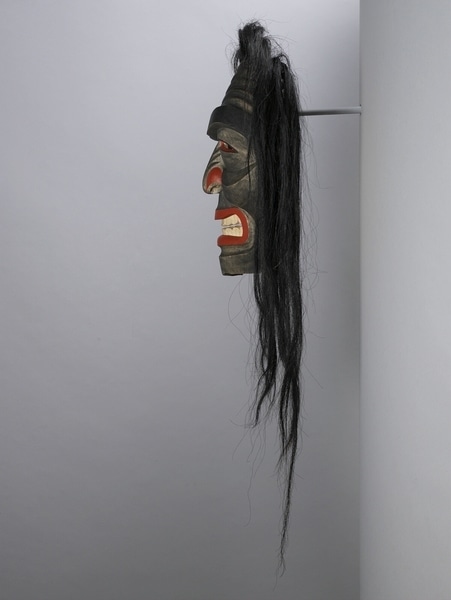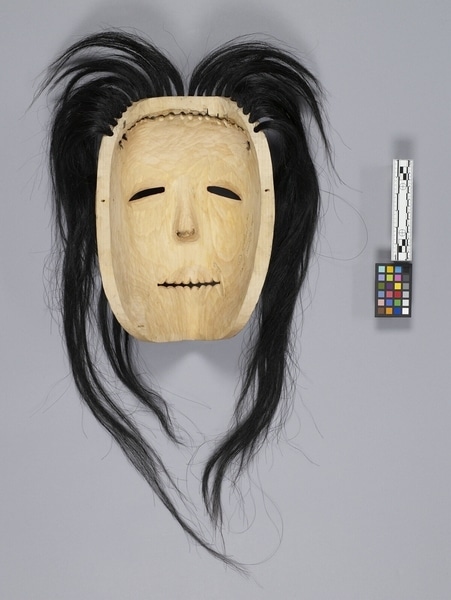Chiefs Mask/Oil Spill Item Number: Nb3.1443 from the MOA: University of British Columbia




Description
Chief's mask with wrinkled brow and nose, elongated eye slits, angular cheeks, and a mouth with lips open baring two rows of teeth. The mask is painted or stained grey with the edges of the eyes, the nostrils, and the lips painted red. Long strands of black hair emerge from the top edge of the mask.
History Of Use
Traditionally such a mask (one that tells of a disaster) would be commissioned by a Chief to tell the people, of present and future, of this disaster. A song and dance would also be commissioned, and the three performed together before the people in the bighouse. They would tell the story of how the Chief's land was being abused.
Iconographic Meaning
The oil spill mask conveys the wickedness of an oil spill disaster on territorial coastline.
Narrative
The mask is David Neel's personal statement, as a hereditary carver of the Kwakwaka'wakw. As this carving is disassociated from a song or dance, it is incomplete. This mask communicates the artist's feelings in response to the Burrard Inlet disaster c. 1990.
Item History
- Made by David Neel (Maker) in British Columbia, Canada during 1990
- Owned by David Neel before December 10, 1990
- Received from Museum of Anthropology Shop Volunteers (Funding source) and David Neel (Seller) on December 10, 1990
What
Who
- Culture
- Kwakwaka'wakw
- Creator
- David Neel (Maker)
- Previous Owner
- David Neel
- Received from
- Museum of Anthropology Shop Volunteers (Funding source) and David Neel (Seller)
Where
- Holding Institution
- MOA: University of British Columbia
- Made in
- British Columbia, Canada
When
- Creation Date
- during 1990
- Ownership Date
- before December 10, 1990
- Acquisition Date
- on December 10, 1990
Other
- Condition
- excellent
- Current Location
- Case 22
- Accession Number
- 1446/0001